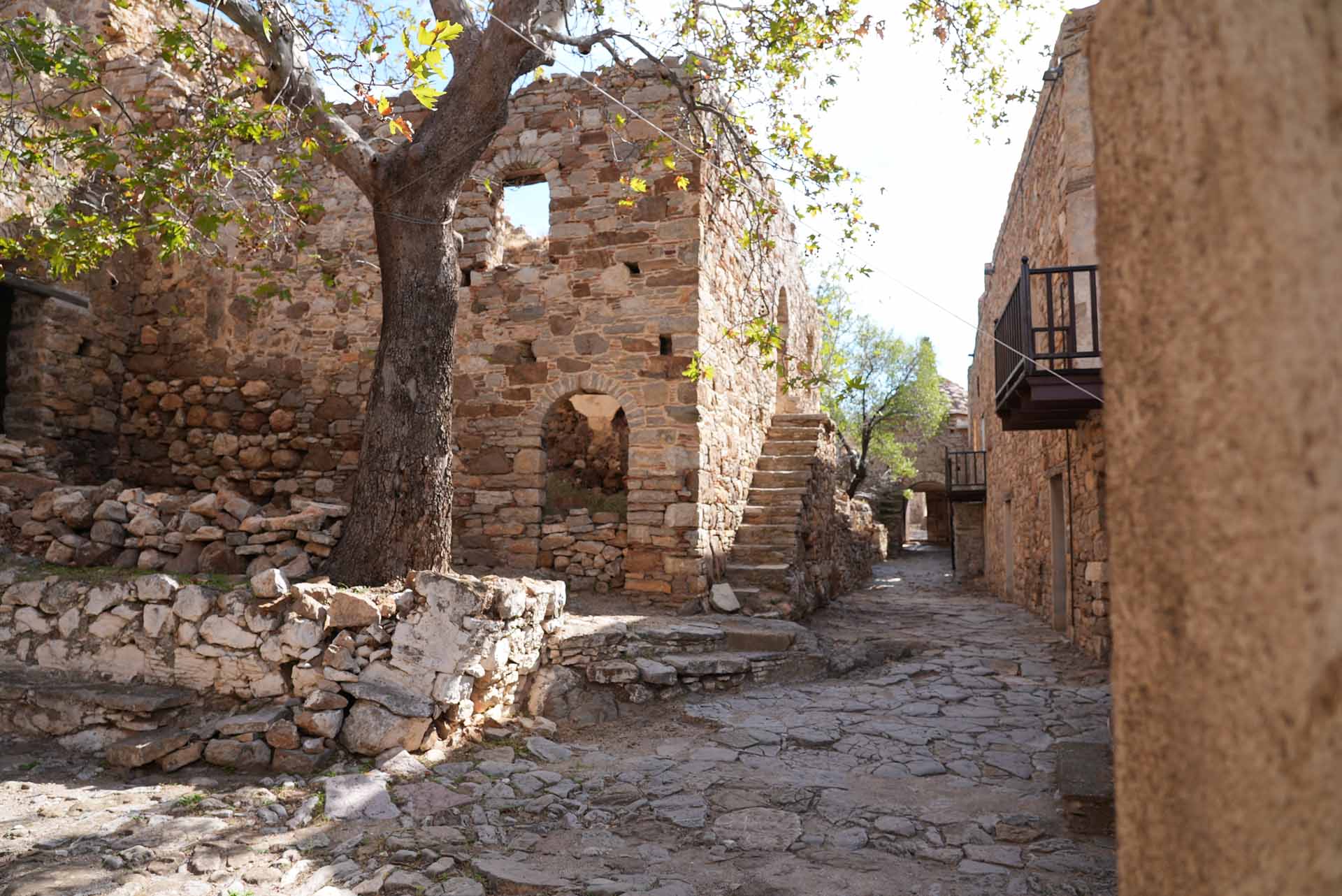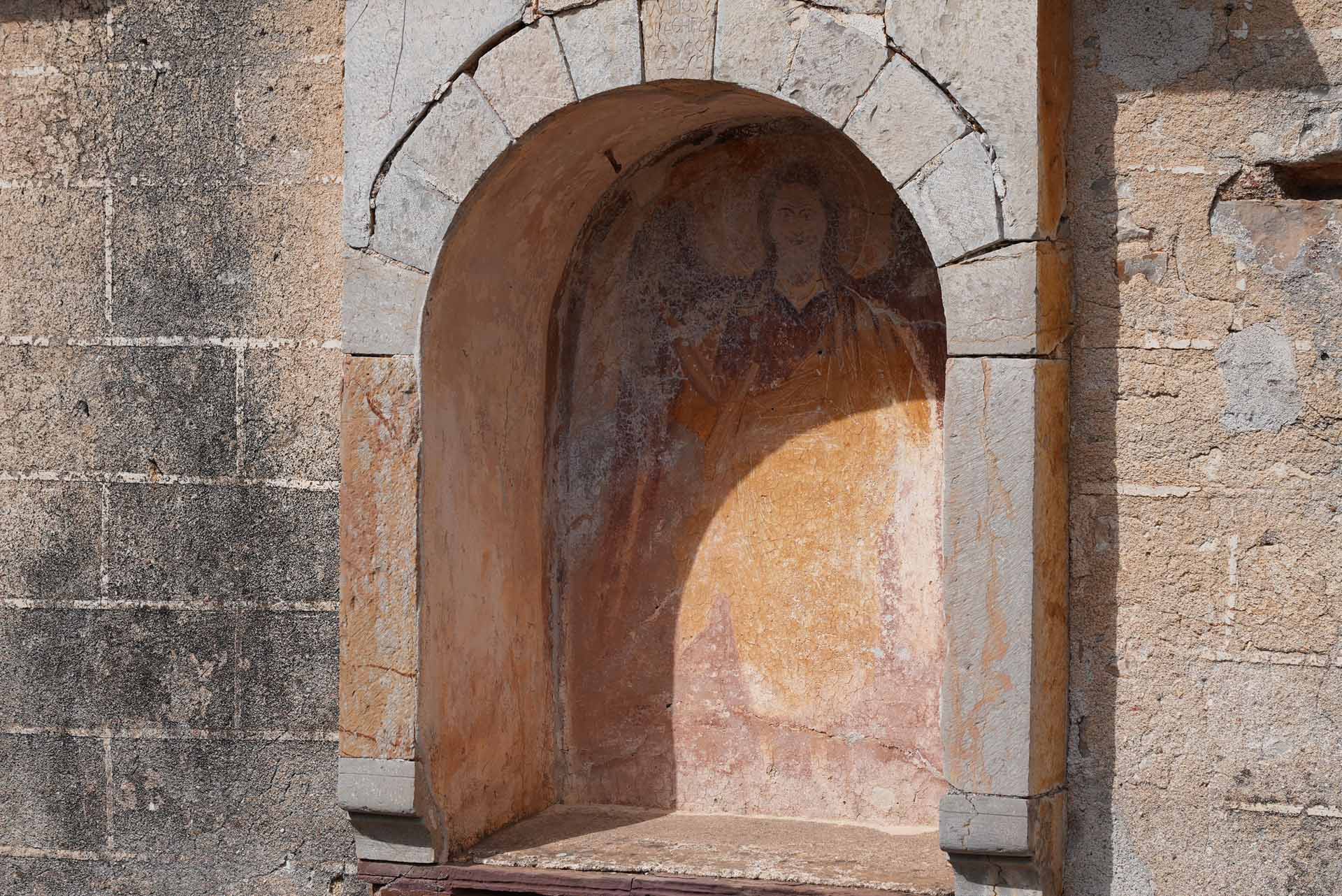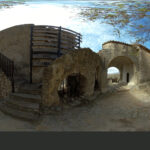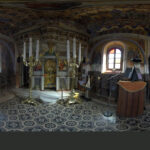The Monastery of Moundon, dedicated to Saint John the Baptist, is located at an altitude of 300 metres near the village of Diefcha. Its history dates back to Byzantine times and in 1574, it was renovated by the monk Iakovos Lagadiotis. The Monastery once housed an important library that held a parchment from 1462 with the will of Saint Matrona Chiopolitida.
Several wealthy Chians lived at the Monastery as monks, and, along with its extensive agricultural lands and pastures, they contributed to its economic strength. However, in times of crisis, the Monastery often fell into debt and had to borrow money. Records show that in 1620, the Chian painter Manouil Kalaronis was commissioned to decorate the Katholikon (main church), but the project stalled due to insufficient funds. A second attempt in 1622 by Neophilos Paradisis also failed. The iconography was finally completed in 1730, only to be destroyed in the 1881 earthquake. The remaining frescoes, painted by an anonymous artist in 1849, are still visible today, as indicated by an inscription above the main entrance to the Katholikon. The Monastery was destroyed by the Turks in 1822 and later rebuilt, as recorded by another inscription at the entrance, dating from 1949.
The Monastery made significant contributions to the Greek nation’s struggles, offering financial support during the liberation of Chios in 1912. During the German occupation in 1943, it provided refuge to resistance fighters, including Iasonas Kalambokas, a prominent figure of the resistance, while in 1922, it sheltered refugees arriving from Asia Minor.
Today, the Monastery of Moundon is classified as a historical monument and remains one of the most important religious sites on Chios, though signs of neglect are evident. Restoration efforts are urgently needed. The Monastery does not have monks and only opens once a year on August 29th, the day celebrating Saint John the Baptist.



























